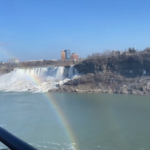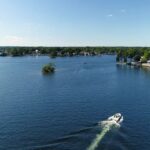The roar of Niagara Falls doesn’t discriminate by season, but your experience certainly can! Deciding when to visit this mesmerizing natural wonder involves more than just avoiding crowds. Imagine crisp fall air painting the leaves around the Falls in vibrant hues, or picture yourself cooling off with a Maid of the Mist boat ride under a summer sun.
This guide dives into the pros and cons of each season, helping you craft the perfect Niagara Falls escape tailored to your desires. Let’s find the month that unlocks the most unforgettable memories for you, beyond the mere spray of the Falls.
What Happens if You Want to Visit in The Spring?
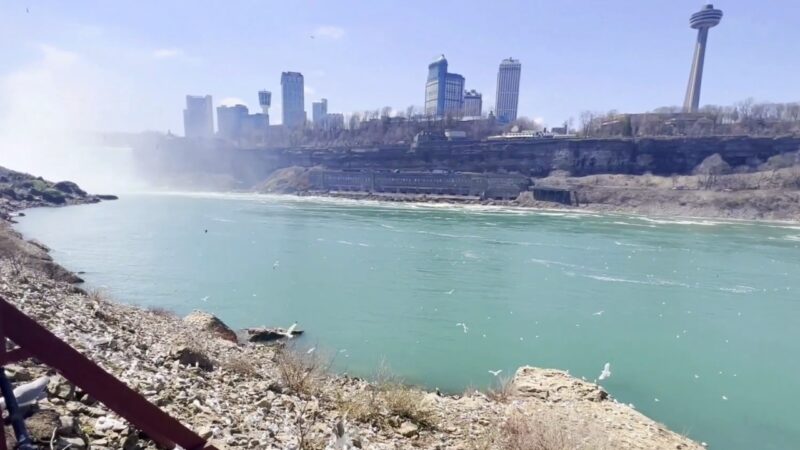
Spring in Niagara Falls, typically from April to June, is a season of renewal and fresh beginnings. As the snow melts and temperatures rise, the falls and surrounding parks burst into life with blooming flowers and budding trees.
Meanwhile, in Holland, Michigan, another vibrant and colorful destination in the spring, tulips carpet the city in a stunning display of natural beauty, adding to the season’s allure.
This season offers the unique opportunity to witness the falls at one of their most powerful phases due to the melting snow and spring rain, which increase the volume of water cascading over the edge. Crowds are generally smaller this time of year, making it easier to explore attractions and enjoy shorter wait times.
However, visitors should be prepared for unpredictable weather, ranging from warm, sunny days to cool, rainy periods. Packing layers and waterproof clothing is advisable. Spring also marks the reopening of many attractions that close during the winter, such as boat tours, which begin operating in late April or early May.
What Happens if You Want to Visit in The Summer?
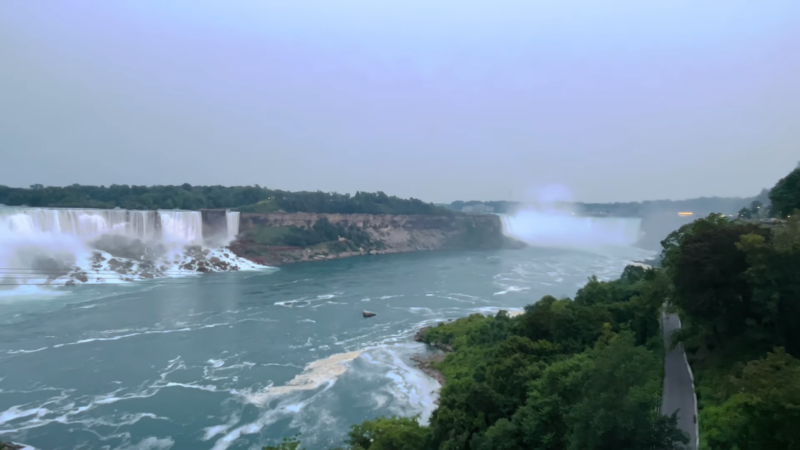
Summer, from July to August, is the peak tourist season at Niagara Falls, and with good reason. The weather is warm and sunny, ideal for exploring the outdoor beauty of the falls and engaging in numerous activities available in the area.
From thrilling boat rides near the base of the falls to leisurely strolls along the Niagara Parkway, summer offers the full Niagara Falls experience. This season also boasts a calendar packed with events, festivals, and fireworks displays, adding to the excitement.
However, the popularity of summer visits means larger crowds and higher prices for accommodations and attractions. Booking in advance is crucial to secure the best rates and ensure availability, and you should get more info about the private tours so you can get the best experience possible. For those willing to brave the crowds, summer presents Niagara Falls in all its glory, complete with vibrant landscapes and a bustling atmosphere.
What Happens if You Want to Visit in The Fall?
Autumn in Niagara Falls, from September to October, is a time of breathtaking beauty as the foliage surrounding the falls transforms into a tapestry of reds, oranges, and yellows. The cooler temperatures and diminishing crowds make this season ideal for those seeking a more peaceful visit.
The wine harvest season in nearby Niagara-on-the-Lake offers an added attraction, with wine festivals and tastings celebrating the region’s renowned produce. While the weather is generally mild and pleasant, evenings can be cool, so dressing in layers is recommended. Autumn’s serene beauty and relaxed pace provide a perfect backdrop for exploring the falls and the surrounding area without the summer crowds.
As you explore the serene beauty of this region, consider extending your journey to Lake Orion, where you can indulge in my 5 favorite things to do, including lakeside strolls, local art galleries, charming boutiques, waterfront dining, and perhaps even a relaxing boat ride. This nearby gem complements the tranquility of the fall season, offering a delightful extension to your Niagara Falls experience.
What Happens if You Want to Visit in The Winter?
Visiting Niagara Falls in the winter months, from November to March, presents a starkly different but equally mesmerizing experience. The falls themselves transform into a frozen wonderland, with ice formations creating a magical landscape that contrasts sharply with the thundering water.
Winter festivals light up the area, offering festive cheer and activities such as ice skating and winter walks. The crowds are much smaller, and accommodation prices drop, making it an attractive time for budget travelers and those seeking solitude.
However, many attractions operate on limited schedules or close for the season, so it’s important to check availability in advance. Packing warm clothing and waterproof boots is essential for a comfortable experience in the chilly temperatures.
What Happens if You Want to Go in The Off-Peak Season?
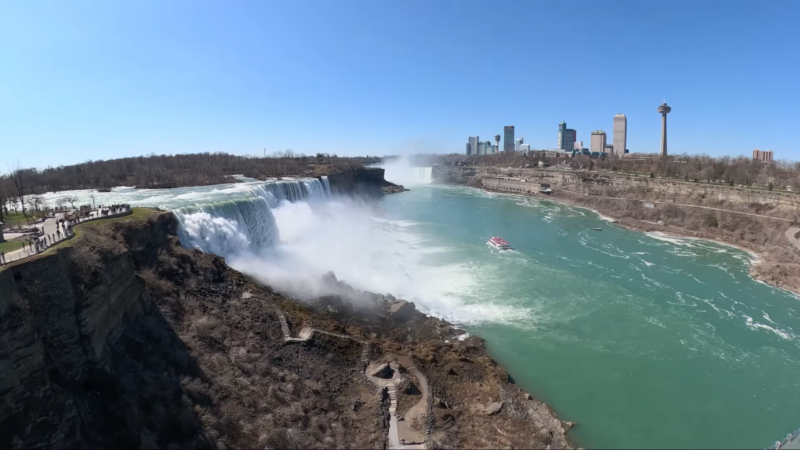
For those looking to avoid the crowds and perhaps find a more intimate experience with Niagara Falls, the shoulder seasons of late spring and early autumn can provide an ideal balance. May and September, in particular, combine the advantages of mild weather with the scenic beauty of the falls, minus the peak season’s hustle and bustle.
These months often offer the best of both worlds: the full operational swing of attractions and pleasant weather, with fewer tourists to share the view. Additionally, these periods may yield more competitive pricing for hotels and tours, allowing for a more budget-friendly visit.
It’s also a time when the Niagara region hosts various food and wine festivals, adding a rich cultural layer to your visit. Travelers during these months should still prepare for sudden weather shifts, a common trait of transitional seasons.
Make Sure You Pay Attention to The Seasonal Events and Phenomena Before Making a Decision
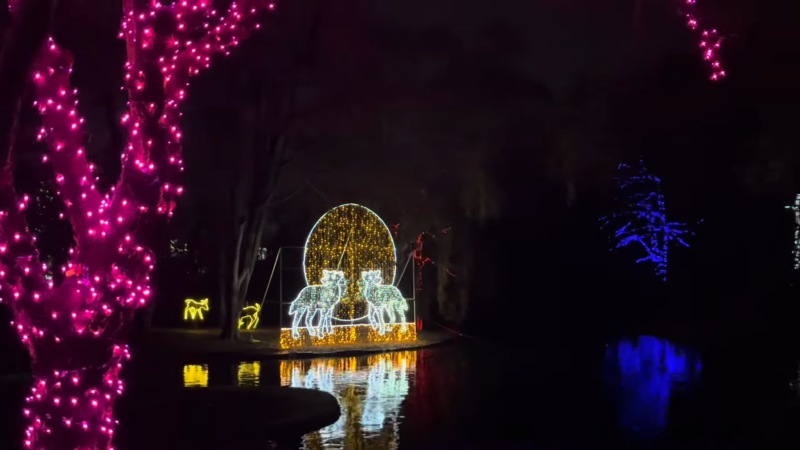
When deciding on the best time to visit Niagara Falls, consider aligning your trip with special events or natural phenomena that could enhance your experience. For instance, the Winter Festival of Lights transforms the Niagara Parkway into a magical landscape of light installations, ideal for those who don’t mind the cold.
Alternatively, timing your visit to coincide with the full moon can allow you to witness the rare and beautiful lunar rainbow over the falls—a phenomenon best seen during the clearer skies of summer and early autumn months. Researching these unique occurrences and planning your trip around them can turn a visit to Niagara Falls into an extraordinary event, imbued with personal significance and wonder.
Ultimately, the best month to visit Niagara Falls depends on your personal preferences and the type of experience you’re seeking. Spring and autumn offer natural beauty with fewer crowds, summer vibrates with energy and the full spectrum of attractions, and winter reveals a quiet, frozen landscape unique to the colder months. Regardless of when you choose to visit, Niagara Falls remains an enduring spectacle of nature’s power and beauty, promising unforgettable memories at any time of year.

